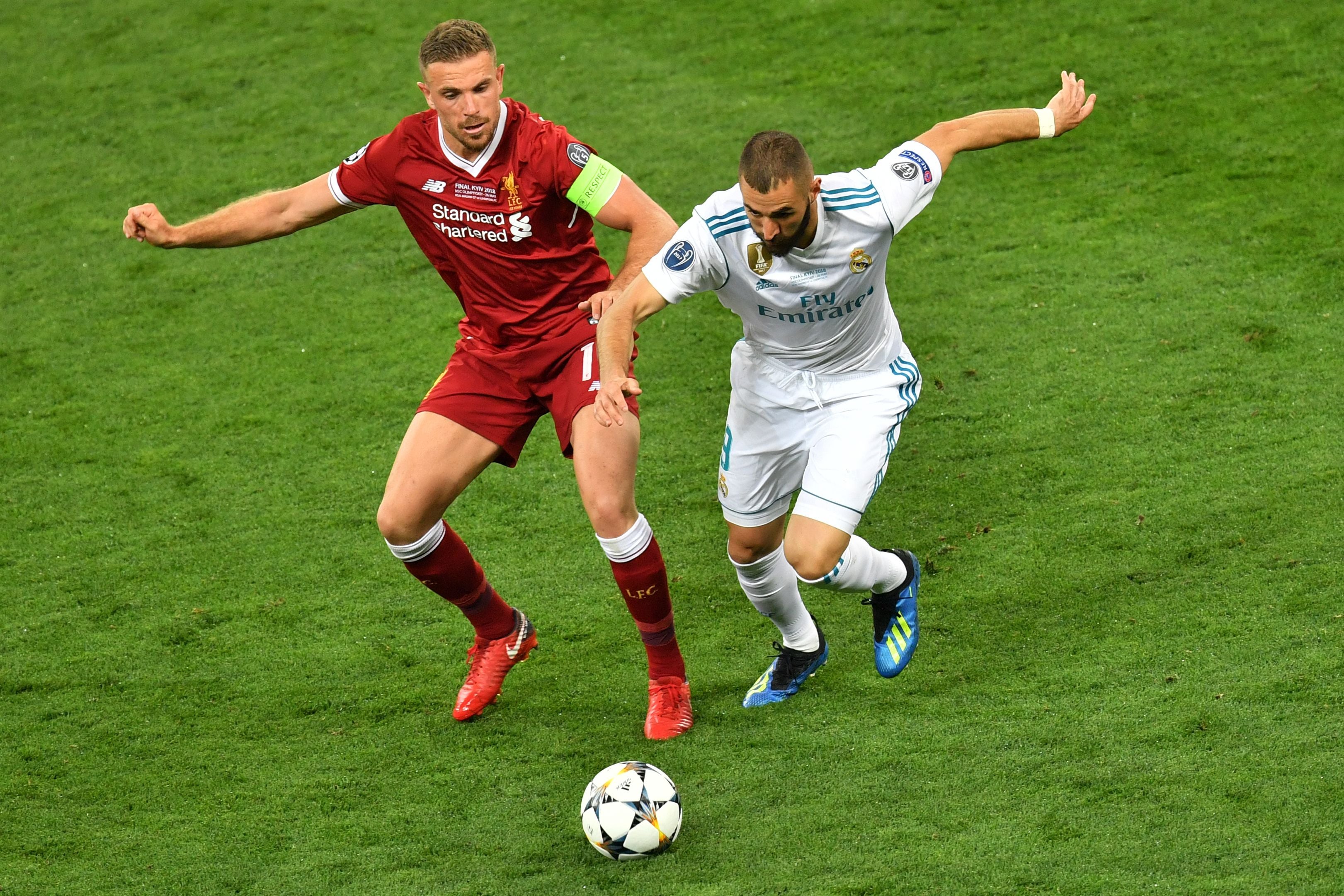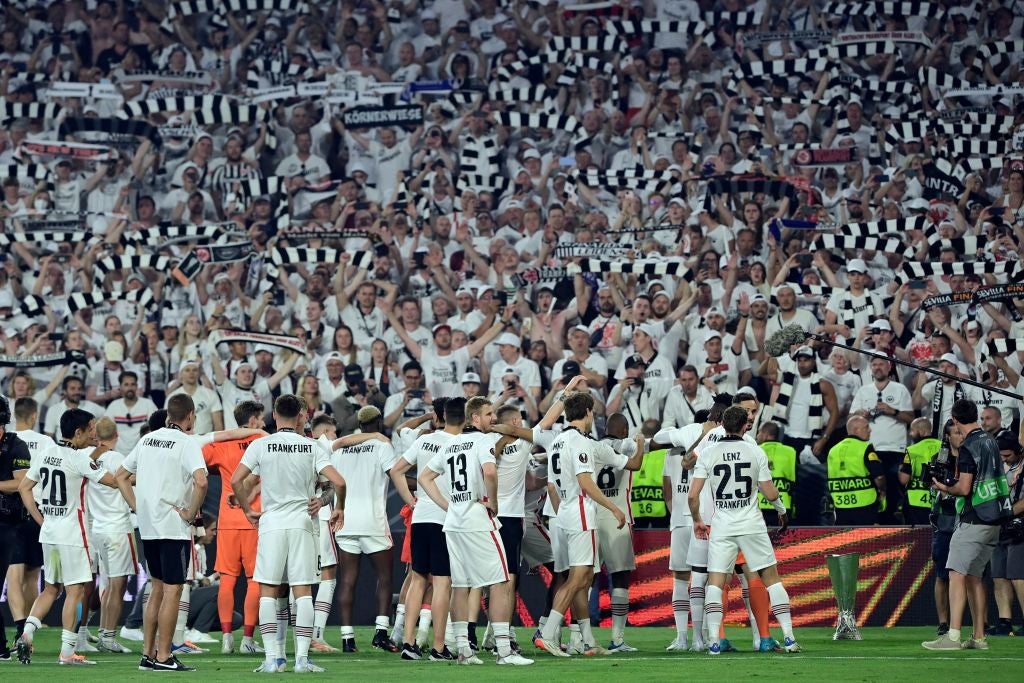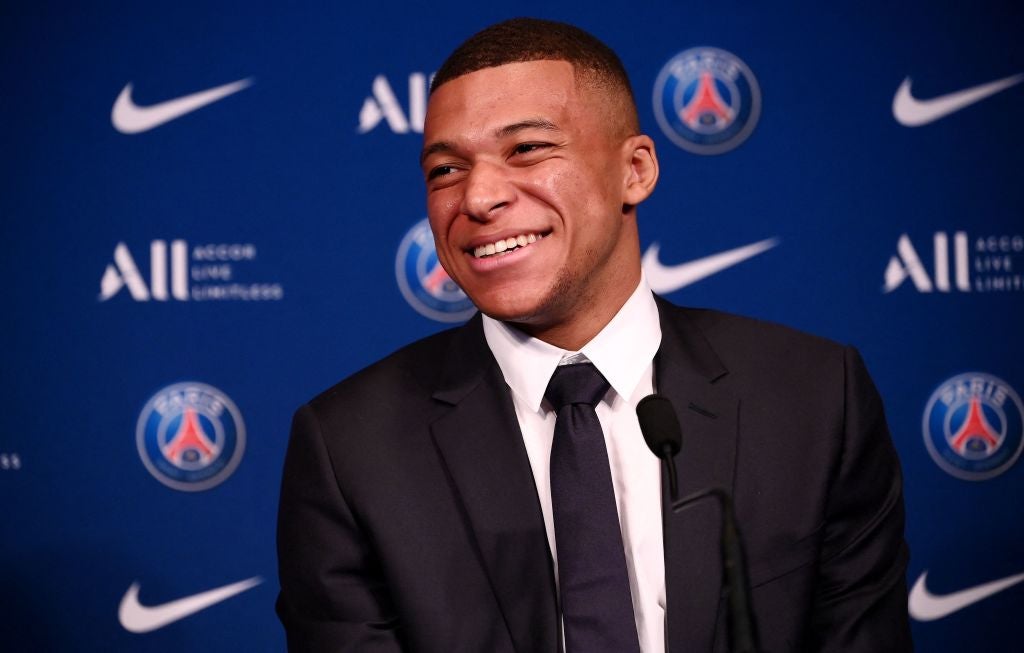The great irony of Champions League’s clash of titans
Meeting of the game’s royalty draws parallels between the European Cup’s greatest eras – and why it might also be the future on a much more regular basis

Your support helps us to tell the story
From reproductive rights to climate change to Big Tech, The Independent is on the ground when the story is developing. Whether it's investigating the financials of Elon Musk's pro-Trump PAC or producing our latest documentary, 'The A Word', which shines a light on the American women fighting for reproductive rights, we know how important it is to parse out the facts from the messaging.
At such a critical moment in US history, we need reporters on the ground. Your donation allows us to keep sending journalists to speak to both sides of the story.
The Independent is trusted by Americans across the entire political spectrum. And unlike many other quality news outlets, we choose not to lock Americans out of our reporting and analysis with paywalls. We believe quality journalism should be available to everyone, paid for by those who can afford it.
Your support makes all the difference.When Mohamed Salah insisted he wanted Real Madrid in the Champions League final, it wasn’t just about revenge, or even himself. It reflected the view of a fair few people within Liverpool, but also the top levels of European football.
A grand showdown with Manchester City would have represented the zenith of modern football, bringing an era of rivalry to a peak, but it also would have peaked in terms of emotional intensity and Premier League domination. Jurgen Klopp’s players would have been ready, of course, but a third all-English final in four years would likely have been subject to the sort of stifling tension most one-country finals generally suffer from.
It similarly would have left the rest of Europe again feeling shut out.
There is little of that with Madrid. There isn’t quite the same sense of suffocation, since it feels someway different to be facing a big European club.
That is also supposed to be what the Champions League is all about, but then that’s a big question in itself right now. It is why the 2022 final is both a throwback and a very modern showpiece, that comes at a significant time in a symbolic place.
It was just seven kilometres from the venue of this final, Paris’s Stade de France, in the Salon des Gobelins of the then Hotel Ambassador, that the European Cup was founded in April 1955. There’s quite a historic irony that it came from 18 of the continent’s major clubs getting together independently of the football institutions.
This wasn’t so much a breakaway as breaking new ground, though, especially as regular international competition had only recently been made possible by commercial air travel. The European Cup was devised to crown the continent’s greatest side, which was why Gabriel Hanot suggested a 16-team league in his initial idea in L’Equipe. It sounds familiar. Two-legged knockout ties were settled upon as a compromise, to diminish the effects of luck, but also to prevent fixture congestion. Santiago Bernabeu, the first of a line of domineering Madrid presidents, instantly saw the immense potential of all this – most of all for his club, Real Madrid.
He drove that first meeting, right down to insisting they stage the first-round draw. This was despite the fact that Uefa, formed a year before, were not yet involved and were initially lukewarm. Fifa were willing to sanction the competition so long as clubs had approval from national federations, and so the European Cup was born.
It is funny how so many of the same forces condition the game, albeit in a different context, almost 70 years on. They have just evolved into something that would have been scarcely imaginable in 1955, culminating in a post-2024 Champions League that many leading football figures are describing as “a monster”.
The new “Swiss system” expansion to 36 clubs represents the third major change to the original European Cup, after 1992 and 1999, but there’s even more irony to that. It’s that the last few months have again illustrated that there’s a lot about the Champions League that doesn’t need changing.
The return of fans has seen the competition reinforce its status as the greatest show on earth, the drama only escalating. So many midweek ties have proven themselves unmissable, right up to supposedly lost causes of second legs, like Villarreal’s remarkable response against Liverpool.
It was again primetime drama, the type of entertainment and audiences that most marquee TV series can only dream of delivering.
A series of modern factors, from how squads are built to the science and tactics possible, have allowed top teams to push the limits of the game. Even the abolition of the away goal rule has obviously been successful. This has been another season where the goals per game have been above three, for the fourth time in six years. Those four seasons meanwhile represent the four highest-scoring campaigns since the European Cup became the Champions League, with some of them almost a goal more per game than 2005-06 (2.35) and 1994-95 (2.3). The last time we had an era with so many goals was the legend-forging days of the 1960s and early 1970s.
Highest-scoring Champions League seasons since 1992
- 2019/20 - 3.24 goals per game
- 2017/18 - 3.21
- 2021/22 - 3.06
- 2016/17 - 3.04
- 2012/13 - 2.94
- 2020/21 - 2.93
- 2018/19 - 2.93
- 2013/14 - 2.90
- 2014/15 - 2.89
- 1993/94 - 2.89
Highest-scoring European Cup seasons of all time
1955/56 - 4.38 goals per game
1959/60 - 4.19
1961/62 - 4.04
1957/58 - 3.94
1956/57 - 3.86
1965/66 - 3.86
1962/63 - 3.63
1963/64 - 3.48
1964/65 - 3.41
1968/69 - 3.38
That fosters the feeling that this is a golden era in terms of the football on the pitch, which makes the presence of Madrid and Liverpool in a Paris final all the more fitting. There has never been a showpiece with so much history, the two clubs having collectively won 19 European Cups. The next best was 2018, and that emotionally charged meeting between the same clubs, who at that time shared 17.
And yet therein lies the more concerning side to so much sensational spectacle. The contradiction of the competition is that this entertainment is by now a very necessary antidote to the drab familiarity of so much of the final rounds, if also a consequence of it.
One reason a meeting of Liverpool and Madrid is so charged is, of course, because this is the third time they’ve met in five years. That makes it one of five pairings to have also been played three times in that time period, while a high number have been repeated. Madrid themselves have been drawn with PSG three times across the same half-decade, with the French champions meeting Bayern Munich the same number of times.
Meanwhile, this is Liverpool’s third final in four years and Madrid’s fifth in nine. Both clubs will obviously bring huge numbers of fans, who see such occasions as core parts of their heritage, but that is also why it will not feel the electrifying event that it did, say, for Rangers and Eintracht Frankfurt in last week’s Europa League final.
That game showed there are about 40 clubs around the continent who can realistically aim for that secondary showpiece. That’s only the case for about nine in the Champions League, and at least half of them – usually more – are always in the quarter-finals.
“These are the days” is a phrase that has spread among Liverpool supporters to recognise just how special this Jurgen Klopp era is, but the reality is this is likely to be the future.
While clubs like Rangers now enjoy a Europa League final as a once-in-a-generation event, a core of superclubs tend to reach a Champions League final every few years. Much of this is of course by design.

The Champions League has been shaped, and now reformed, so that the wealthiest clubs have more games and the greatest chance to go further. How else to describe a prize-money system where, on the last day of last season, Leicester City would have only been guaranteed just under £2m by qualifying but Chelsea were ensured close to £30m?
It is a virtuous cycle for the biggest clubs, but one that gradually pushes everyone else away. That’s how you get to a world where it’s considered a “fairytale” that Ajax – four-time European champions – or Villarreal, seventh-wealthiest club in Spain, get to the semi-finals.
Even some players now talk of “always playing in the same stadiums”, although it should be added that many of them of course love it. That’s another element of this irony.
It is arguably this very familiarity that produces such fireworks, since it fosters storylines, creates tensions and also forces managers to be more innovative. They must constantly second-guess – or third- or fourth-guess – the opposition.
It’s just hard not to think that even a slight redistribution from this – like, say, rebalancing prize money or increasing solidarity funds – would not negatively affect the football and would increase the competitive element. You could still have the same sporting peaks with a greater spread of clubs. The only reason that sides like Villarreal – or Ajax or Benfica or any mid-tier club you care to think of – are not as glamorous or as strong is because they don’t have the money to keep their better players there for longer.
There is greater poignancy to it now, but no one saw Dynamo Kyiv as an upstart dragging things down in 1999. They were one of Europe’s most exciting teams.
So it was for most of European Cup history. Consider that first 1956 final, which took place 13km from the Stade de France at Parc des Princes. Inaugural champions Real Madrid had to come back from 2-0 down to win 4-3 against Stade Reims. The French side’s status has since been lost to history, but they were then one of Europe’s most thrilling teams. They actually lost the brilliant Raymond Kopa to Madrid straight after that final, something that hung over the game, but were able to replace him with 1958 World Cup top scorer Just Fontaine for their return to the showpiece three years later.
Now, as they reel from Kylian Mbappe’s decision, there is at least the danger that Madrid will serve as a throwback themselves.

The top levels of the game are pricing them out. That’s how you become a Milan 2007. That is why they pushed for a Super League, and why they are still putting up a legal fight to be allowed to set up their own competitions.
This time, in some other echoes of 1955, Uefa has instead sought to institutionalise some of the plot’s plans with its own Champions League reforms. The wealthiest clubs will be guaranteed more matches. That is despite the Super League’s failure, and despite the widespread unpopularity of the new competition.
The issue is still that it evades the Champions League’s true problems, which are primarily around financial disparity, rather than actually addressing them.
As for the address at which this great competition was first founded, the Hotel Ambassador is now a Marriott. It’s been branded and globalised, a sense of distinctive old-world prestige replaced by a uniform modern sheen. It’s another symbol for the competition itself.
Join our commenting forum
Join thought-provoking conversations, follow other Independent readers and see their replies
Comments